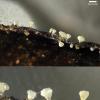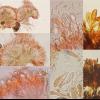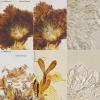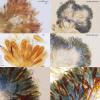
15-12-2025 15:48
 Danny Newman
Danny Newman
Melanospora cf. lagenaria on old, rotting, fallen

15-12-2025 15:54
 Johan Boonefaes
Johan Boonefaes
Unknown anamorph found on the ground in coastal sa

15-12-2025 21:11
 Hardware Tony
Hardware Tony
Small clavate hairs, negative croziers and IKI bb

15-12-2025 07:09
 Danny Newman
Danny Newman
indet. Rutstroemiaceae sp. on unk. fallen leavesMc

15-12-2025 07:05
 Danny Newman
Danny Newman
Pseudosclerococcum golindoi (det: Zotto)near Cosb

15-12-2025 11:49
 Danny Newman
Danny Newman
ITS sequences from the following two collections B

15-12-2025 12:34
 Danny Newman
Danny Newman
indet. Rhytismataceae on oak leafnear Purchase Roa

09-12-2025 12:06
 Andgelo Mombert
Andgelo Mombert
Bonjour,Je recherche l'article concernant Hypobryo
Ascolichen on Blechnum?
Enrique Rubio,
03-09-2025 12:44
I would like to know your opinion on these apothecium-like, gregarious, whitish, pubescent, briefly stipitate fungi, up to 200 microns in height and 150-160 microns in width, which were growing on Blechnum spicant fronds on a quartzite wall that was oozing water.
The asci are bitunicate and the whole structure appears dextrinoid, as only the medulla of the fruiting body appears to turn slightly blue in IKI after KOH-pretreatment. Peculiar paraphyses with a highly refractive content can be seen, and perhaps also a pilosity formed by similar elements, although I have not been able to make a vertical section of the ascoma that would give me a good idea of the whole. Nor have I been able to clearly observe a possible thallus at the base of the stipe base.
Could this be an ascolychen?
Thank you very much for your ideas.
Hans-Otto Baral,
03-09-2025 16:31

Re : Ascolichen on Blechnum?
This must be Vezdaea stipitata (Vezdaeaceae). You had it already some years ago (2022?) on a ?liverwort.
The red ascus reaction is hemiamyloid, not dextrinoid (in MLZ without KOH you would get nothing).
I was unaware of such prominent VBs in Lecanorales, staining deep red-brown in IKI. Very probably the family is misplaced there. Available DNA does not give a clear hint on their relationship. Syllabus gives it as Vezdaeales in Xylonomycetes while in the Outline 2024 it is Vezdaeales in Pezizomycetes incertae sedis.
Enrique Rubio,
04-09-2025 12:02
Franz Berger,
16-09-2025 11:20

Re : Ascolichen on Blechnum?
More text can be found in Poelt & Vezda 1977: Bestimmungsschlüssel europäischer Flechten. - ergänzungsheft 1 . Cramer Vaduz.
With remarks like: "Paraphysen spärlich bis schwierig zu erkennen" - which is in contrast to the images.
and: Asci amyloid, mit jung deutlich amyloidem Tholus. Sporen 1-septate.
Another remark: genus certaily contains more species.
Regards: Franz
With remarks like: "Paraphysen spärlich bis schwierig zu erkennen" - which is in contrast to the images.
and: Asci amyloid, mit jung deutlich amyloidem Tholus. Sporen 1-septate.
Another remark: genus certaily contains more species.
Regards: Franz



